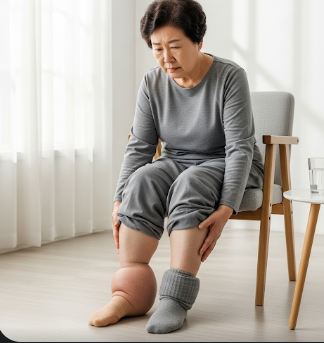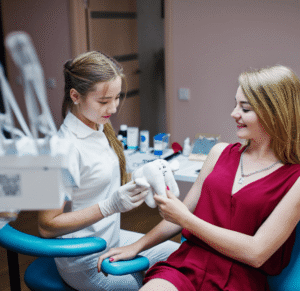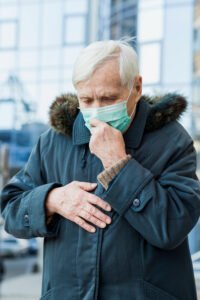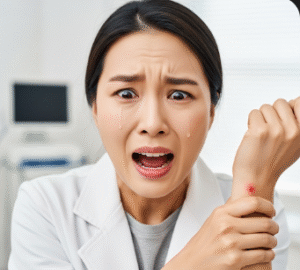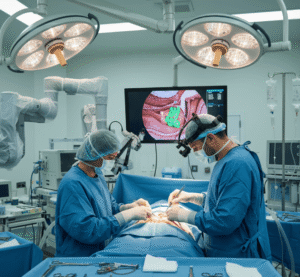Overview
Lower extremity edema refers to the swelling of the legs, ankles, and feet due to excess fluid accumulation in the tissues. This condition can result from a wide range of causes, including cardiovascular, renal, hepatic, or lymphatic disorders. While mild edema may be temporary and benign, persistent or severe swelling can indicate serious underlying health problems.
In Korea, hospitals and specialized clinics offer comprehensive evaluation and treatment for lower extremity edema. Diagnostic approaches may include blood tests, imaging studies, vascular assessments, and cardiac evaluation, allowing doctors to identify the root cause and provide effective management.
Key Facts
- ➔ Edema occurs when fluid accumulates in the interstitial tissues, causing visible swelling.
- ➔ It is commonly seen in the ankles, feet, and lower legs, but can also affect other body areas.
- ➔ Causes range from benign temporary swelling to serious medical conditions.
- ➔ In Korea, specialized care is available in cardiology, nephrology, hepatology, and vascular clinics.
- ➔ Treatment focuses on addressing the underlying cause, reducing fluid retention, and preventing complications.
What is Lower Extremity Edema?
Lower extremity edema is a clinical condition characterized by swelling in the legs due to excess fluid accumulation:
- ➔ Pitting edema: Pressing the skin leaves a temporary indentation
- ➔ Non-pitting edema: Swelling that does not leave a dent, often seen in lymphedema or hypothyroidism
- ➔ Clinical significance: Persistent edema may indicate heart failure, kidney disease, liver dysfunction, or venous insufficiency
- ➔ Types based on duration and cause:
- Acute edema: Rapid onset, often due to injury, infection, or allergic reaction
- Chronic edema: Long-standing, associated with systemic diseases or venous insufficiency
What Symptoms Are Related To
Lower extremity edema may present alongside other symptoms depending on the underlying condition:
- ➔ Visible swelling of the ankles, feet, and legs
- ➔ Shiny, stretched, or tight skin
- ➔ Pitting when pressed
- ➔ Heaviness, discomfort, or aching in the legs
- ➔ Reduced mobility or difficulty walking
- ➔ Associated systemic symptoms:
- Shortness of breath, fatigue (heart failure)
- Abdominal swelling, jaundice (liver disease)
- Reduced urine output (kidney disease)
Recognizing these symptoms is critical for early diagnosis and management.
What Causes / Possible Causes
Lower extremity edema can result from numerous conditions, including cardiovascular, renal, hepatic, and venous issues:
- ➔ Cardiovascular causes: Congestive heart failure, deep vein thrombosis (DVT), or chronic venous insufficiency
- ➔ Renal causes: Kidney disease, nephrotic syndrome, or chronic kidney failure
- ➔ Hepatic causes: Cirrhosis or liver failure causing hypoalbuminemia
- ➔ Medications: Calcium channel blockers, NSAIDs, or corticosteroids
- ➔ Endocrine causes: Hypothyroidism or hormonal imbalances
- ➔ Lymphatic disorders: Lymphedema due to lymph node obstruction or surgery
- ➔ Other causes: Pregnancy, prolonged standing, obesity, or malnutrition
Accurate identification of the cause is essential for effective treatment and prevention of complications.
When Should I See My Doctor
Seek medical evaluation if edema:
- ➔ Persists for more than a few days or worsens
- ➔ Is accompanied by shortness of breath, chest pain, or palpitations
- ➔ Occurs suddenly or asymmetrically in one leg (possible DVT)
- ➔ Is associated with abdominal swelling, jaundice, or reduced urine output
- ➔ Causes pain, redness, or skin ulcers
Early consultation ensures timely diagnosis and prevents complications such as infections or organ damage.
Care and Treatment
Treatment of lower extremity edema depends on underlying cause, severity, and associated symptoms:
- ➔ Addressing the root cause: Heart failure management, kidney disease treatment, or liver disease therapy
- ➔ Lifestyle modifications: Reducing salt intake, elevating legs, regular exercise, and avoiding prolonged standing
- ➔ Compression therapy: Use of compression stockings or bandages to reduce swelling
- ➔ Medications: Diuretics to remove excess fluid under medical supervision
- ➔ Monitoring: Regular check-ups to evaluate edema response and underlying condition progression
- ➔ Infection prevention: Proper skin care to prevent cellulitis or ulcers in severe edema
- ➔ Hospital care: In cases of severe edema or complications, hospitalization may be required for intravenous therapy and close monitoring
With proper management, patients can significantly reduce swelling, improve mobility, and prevent complications.
Treatment Options in Korea
Korean hospitals offer specialized services for diagnosing and managing lower extremity edema:
- ➔ Diagnostic evaluations: Blood tests, kidney and liver function tests, echocardiography, Doppler ultrasound, and vascular studies
- ➔ Specialist consultations: Cardiologists, nephrologists, hepatologists, vascular surgeons, and endocrinologists
- ➔ Medical therapy: Diuretics, medications to manage heart, liver, or kidney disease
- ➔ Therapeutic interventions: Compression therapy, leg elevation, and physiotherapy
- ➔ Hospitalization: For severe edema with complications or underlying systemic disease
- ➔ Multidisciplinary approach: Coordinated care for patients with complex or multiple underlying conditions
- ➔ Leading hospitals: Seoul National University Hospital, Asan Medical Center, and Samsung Medical Center provide state-of-the-art diagnostics, personalized treatment, and follow-up care
In Summary: Lower extremity edema is a condition of fluid accumulation in the legs that can result from cardiovascular, renal, hepatic, lymphatic, or medication-related causes. Timely evaluation and treatment in Korea can identify the underlying cause, reduce swelling, prevent complications, and improve quality of life.
- ➔ Key Takeaway: Persistent or worsening leg swelling should prompt medical assessment to diagnose underlying conditions and prevent serious complications.
- ➔ Action Point: Consult specialists for diagnosis, treatment, lifestyle guidance, and ongoing monitoring.

